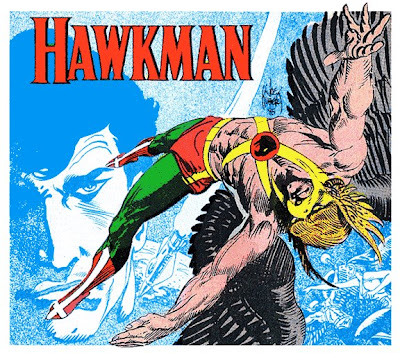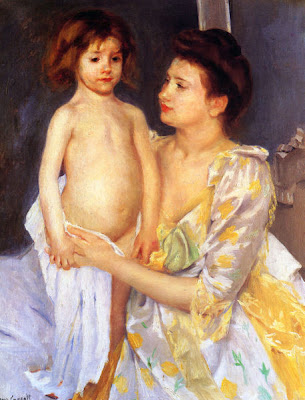"
Obama: Anti-Christ With A New World Odor
Posted on May 26, 2009Filed Under
Uncategorized 2 Comments(@PeterSantilli )
People who know me understand why I voted for Obama and campaigned for him so vigorously.
For four years, I was so upset with George Bush & his so-called “War On Terror”; 9-11, in my opinion, was the greatest hoax perpetrated on America.
The 12 billion dollar per month Iraq War, the economic crisis, and a whole host of other issues Obama promised Americans he would change. Over 100 days into his historic presidency, and the only thing that has changed is himself.
He’s a 180 degree opposite of the man I wanted to be my President, primarily because he’s done the polar opposite of almost everything he promised.
For a very short period, I detached myself from Republican roots & basked in the “liberal” name-calling inflicted upon me. It was new & exciting to be called a liberal, if only because I was an Obama supporter. The newness has worn off. Calling me a liberal would mean I am associated with a large group of people who tolerate Obama’s totalitarianism & reckless behavior.
In December 2007 I heard a convincing campaign speech on Iraq. Obama was adamant: When he became President, the United States was NOT going to spend $12 billion per month on the Iraq war.
He was absolutely right; the nation could not afford it….and that was well before the economic crisis to us to the edge of the abyss.
In just over 100 days, we’re realizing that the nation cannot afford four years of Obama either.
Here’s a few reasons why:
Oppressing Liberty
Debt
“There is no doubt that we’ve been living beyond our means and we’re going to have to make some adjustments.” — Obama during the campaign.
The $49 million inauguration — triple what taxpayers spent at Bush’s first inauguration. Obama has asked his Cabinet to cut costs in their departments by $100 million — a whopping .0027%!
“Chicago has yet to recoup the $1.74 million cost of President Obama’s victory celebration in
Grant Park — despite a burgeoning $50.5 million budget shortfall that threatens more layoffs and union concessions.” — Chicago Sun-Times, 2/20
This year’s budget deficit: $1.5 trillion.
Obama - The Great Orator
“Mr. Obama is an accomplished orator but is becoming known in America as the ‘teleprompt president’ over his reliance on the machine when he gives a speech.” — Sky News, 3/18
When we voted for Obama, we trusted that he would continue being a great orator. He’s a tele-prompter-zombie & we fear what he would say if the power goes out.
Census
In early February, the 2010 census was moved out of the Department of Commerce and into the White House, politicizing how federal aid is distributed and electoral districts are drawn.
AIG Bonuses
Executives at AIG get $165 million in bonuses, despite receiving an $173 billion taxpayer bailout.
“For months, the Obama administration and members of Congress have known that insurance giant AIG was getting ready to pay huge bonuses while living off government bailouts. It wasn’t until the money was flowing and news was trickling out to the public that official Washington rose up in anger and vowed to yank the money back.” — Associated Press, 3/18
Health Care Reform
“The Obama administration is signaling to Congress that the president could support taxing some employee health benefits, as several influential lawmakers and many economists favor, to help pay for overhauling the health care system. The proposal is politically problematic for President Obama, however, since it is similar to one he denounced in the presidential campaign as ‘the largest middle-class tax increase in history.’ ” — New York Times, 3/14
Pork Barrel Spending
“Obama criticized pork barrel spending in the form of ‘earmarks,’ urging changes in the way that Congress adopts the spending proposals. Then he signed a spending bill that contains nearly 9,000 of them, some that members of his own staff shoved in last year when they were still members of Congress. ‘Let there be no doubt, this piece of legislation must mark an end to the old way of doing business, and the beginning of a new era of responsibility and accountability,’ Obama said.”
Hope Versus Fear
The same politician who proclaimed during his inauguration that ‘on this day we have chosen hope over fear’ soon warned Americans that the US economy would be forever destroyed if the stimulus bill was voted down.
Why was it that same man who promised to put Americans’ interests ahead of his own political ambitions chose instead to use the suffering of citizens to advance his agenda?
Maybe he was following the guidance of Rahm Emanuel, who famously said, ‘You never want to waste a good crisis.’
Treasury Secretary Geithner
Timothy Geithner nomination as Secretary of Treasury was almost torpedoed when it was discovered he had failed to pay $34,000 in Social Security and Medicare taxes. He also employed an illegal immigrant as a housekeeper. He was confirmed anyway.
Geithner, simply put, is a former Fed Mob Boss, and a well documented member of the Council on Foreign Relations, Bilderberg attendee, and target of every conspiracy theory known to the modern world.
Cronyism
“Barack Obama has been embroiled in a cronyism controversy after reports that he intends to make Louis Susman, one of his biggest fundraisers, the new US ambassador in London. The selection of Mr. Susman, a lawyer and banker from the president’s hometown of Chicago, rather than an experienced diplomat, raises new questions about Mr Obama’s commitment to the special relationship with Britain.” — Telegraph, 2/22
Samantha Power, who resigned from the Obama campaign after calling Hillary Rodham Clinton a “monster,” was hired to a position on the National Security Council.
Adolfo Carrion was confirmed as Director of White House Office of Urban Affairs, but is serving under a cloud after allegations that he accepted thousands of dollars in cash from developers whose projects he approved.
Seven of the Obama campaign’s top 14 donors consist of officers and employees of the same Wall Street firms charged time and again with looting the public and newly implicated in originating and/or bundling fraudulently made mortgages.
Lobbyists
After saying he wouldn’t have lobbyists in his administration, Obama made 17 exceptions in the first two weeks in office; including Tom Daschle, who worked as a top lobbyist yet was going to be appointed Secretary of Health and Human Services — until his failure to pay income taxes derailed his nomination.
Transparency
“The Obama administration has directed defense officials to sign a pledge stating they will not share 2010 budget data with individuals outside the federal government.” — Defense News, 2/19
Remember when Obama said that Americans would know where every stimulus dime is being spent? Guess what’s worse than his lack of accountability. The American public’s failure to do anything about it.
Oversight
“The GAO study asserts that officials from most of the states surveyed ‘expressed concerns regarding the lack of Recovery Act funding provided for accountability and oversight. Due to fiscal constraints, many states reported significant declines in the number of oversight staff — limiting their ability to ensure proper implementation and management of Recovery Act funds.’ ” — ABC News, 4/23
Trade, Labor & Environmental Issues
Obama quietly announced that he would not press for new labor and environmental regulations in the North American Free Trade Agreement, going back on a campaign promise.
Military Spending
Obama asked Congress for an extra $83.4 billion to fund operations in Iraq and Afghanistan, a special funding measure of the kind he opposed while in the senate. As a candidate, Obama promised to cut the cost of military operations.
Militant Governance of the Private Sector - Dictatorship
“The United States government has no interest in running GM. Your [GM] warranty will be safe. In fact, it will be safer than it’s ever been, because starting today, the United States government will stand behind your warranty.” — Obama
Firing Rick Wagoner as president of GM
Threatening to fire Vikram Pandit as CEO of Citigroup.Threatening to fire anyone the administration doesn’t like from any company.
Forced banks that didn’t want TARP money to take it, then added on stipulations about pay and government control after the fact. Secretly forced Bank of America to buy Merrill Lynch, then allowed the bank to be criticized for overpaying.
Stimulus Spending On Infrastructure
In the stimulus, of the more than $200 billion that went directly to states and cities, nearly 70% went to education and healthcare spending. Only 24% went to infrastructure spending.
But the states and cities in the most trouble already spend way too much on education and healthcare, pushing taxes up and sending private industry away. They don’t spend nearly enough on infrastructure, which attracts the private sector and builds the real economy.
As David Walker, former comptroller general of the US, said at the Regional Plan Association’s annual meeting, nationwide, we are the ‘highest in the world’ on education. We are ‘the highest in the world’ on healthcare. ‘Nobody comes even close.’ On infrastructure, by contrast, we are ‘below average’ in both critical new investments and in much-needed maintenance spending. And, as Democratic governor of Pennsylvania Ed Rendell said at the same conference, when President Dwight Eisenhower left office, infrastructure spending was about 12.5% of non-military domestic spending. Today, it’s about 2.5%.
Consider: almost half of China’s $585 billion economic-stimulus program, announced last November to much fanfare, is earmarked for infrastructure spending on railroads, highways and power grids. Another 25% will go to reconstruct entire towns in Sichuan province that were devastated by last year’s earthquake. These are “shovel-ready” infrastructure projects.
Contrast China’s economic rescue effort with the stimulus package recently signed into law by President Barack Obama. In the U.S., despite all the talk about shovel-ready construction projects, only about $100 billion of the $787 billion in stimulus spending will go toward new infrastructure this year. Another $282 billion goes to tax cuts or rebates, much of which, as economist Nouriel Roubini argues, will most likely be saved, not spent. A big chunk of the rest of the package will go, via the states, toward social services: increased unemployment benefits, more money for food stamps and for health-care spending for the poor and the elderly
In other words, Washington is providing lots of funding for “social safety net” programs — precisely the kind of programs that poor and unemployed Chinese really need and the government barely provides. Meanwhile, China is throwing money at infrastructure projects to a degree that the U.S. — with its creaky bridges, potholed roads, crumbling schools and obsolete airports — hasn’t seen in decades. There is some infrastructure spending in the U.S. plan, to be sure, but not enough, many economists believe, to deliver a real jolt to a moribund economy.
These are indisputable facts. Obama is either extremely misguided by his advisors, or is proceeding as the world’s anti-christ by single-handedly destroying the American empire.
Don’t forget, I was a loyal Obama supporter up until I started realizing that he’s making decisions totally in contradiction with his campaign promises.
Obama’s making terrible decisions, but most importantly, he’s betraying the people who put him in office. What are we gonna do about it?
F-se! What are we gonna do about it? Faço das Palavras do Peter Santilli tb as minhas. ( Claro que com as devidas distâncias salvaguardadas...)

.jpg)


.jpg)
 Frank Frazetta. Conan the Barbarian (1970s).
Frank Frazetta. Conan the Barbarian (1970s).
 Todd McFarlane. Spider-Man (1990).
Todd McFarlane. Spider-Man (1990). John Romita, Sr. Spider-Man (1967).
John Romita, Sr. Spider-Man (1967). Joe Shuster. Superman (1938).
Joe Shuster. Superman (1938).

.jpg)

























